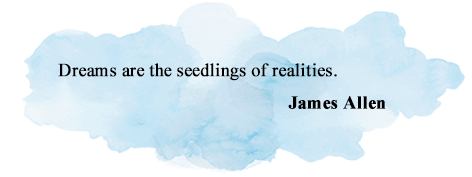

One autumn night in 1885, Robert Louis Stevenson was having an uneasy dream. A man named Hyde was being chased after for some crime, and suddenly transformed into another person in front of his pursuers. Stevenson let out a scream of terror, which awoke his wife, who in turn woke him up. The disturbing dream became the basis of The Strange Case of Dr Jekyll and Mr Hyde, one of the best horror tales of all time. Stevenson was not alone in his experience. Throughout the history of literature, there has been no shortage of literary works that have sprung unbidden from the dreams, reveries or even nightmares of writers.
The story believed to be the origin of “Kubla Khan”, a cryptic poem written by Samuel Taylor Coleridge more than 200 years ago, has often been cited as an example of how dreams have inspired writers in a mysterious way. Feeling slightly indisposed one night in 1797, the English poet resorted to opium, a common painkiller at the time. He then fell asleep whilst reading a passage about a palace to be built at the command of Kubla Khan, the first emperor of the Yuan Dynasty. As his mind drifted off to the dream world, he was taken back through time on a wonderful journey to Xanadu, a mythical city with luxurious palaces and beautiful scenery.
In his three-hour sleep, Coleridge composed two to three hundred lines depicting his visionary experience. Even he himself doubted if this could be counted as composition, recalling that in his dream, “all the images rose up before him as things, with a parallel production of the correspondent expressions, without any sensation or consciousness of effort.” Most works of art are perceived to be the sweet fruits of hard labour, but “Kubla Khan” seems to have been a free gift delivered straight to Coleridge’s doorstep.
Coleridge could vividly remember the whole poem when he woke up from the dream. Unfortunately, after transcribing some lines, he was interrupted by an untimely visitor. When he returned to his desk an hour later, the remaining part had already slipped his mind. Initially, Coleridge kept the unfinished poem to himself and read it to his friends. It was only published later in 1816 at Lord Byron’s encouragement. With only 54 lines, “Kubla Khan” will forever be incomplete, but this fragment of a dream, known for its powerful visual imagery, remains an exemplar of Romanticism in English poetry.
In the same year that “Kubla Khan” was published, Lord Byron spent the summer in Geneva with his friends, including a young woman by the name of Mary Shelley. Confined to the house by incessant rain, the group of friends read volumes of ghost stories to each other. Lord Byron went on to propose that they should try their hand at writing one. Clueless about how her story should begin, Shelley had a waking nightmare of someone trying to assemble an unknown creature, only to be frightened by the hideous monster when it came to life. This was the creative spark that underpinned her Gothic novel Frankenstein. As Shelley set her pen to paper, she felt like, in her own words, “making only a transcript of the grim terrors” of her haunting dream.
Stephen King, a contemporary master of horror literature, once found himself in a situation similar to that experienced by Shelley. In the midst of writing his thriller novel It, he experienced a writer’s block and was unable to move the plot forward. After having a nightmare of being bled by leeches flying out of a refrigerator in a junk yard, he woke up “very frightened” but “very happy” because the dream imagery had finally got him over his mental hurdle.
The writer who made the most of this rich source of inspiration was probably A.E. van Vogt, a best-selling author during the golden age of science fiction. Whilst working on a story, he woke himself up every 90 minutes with an alarm clock through the night in order to think about plot development and sort out problems with his novel-in-process. After scribbling the ideas down, he would then fall back to sleep. This unique way of tapping into the subconscious was rewarding for him. Today, van Vogt is regarded as one of the leading science fiction writers of the mid-twentieth century, and his works are best known for their wild, dreamlike passages.
All these authors’ dream experiences, strange but true, echo the words of Jorge Luis Borges: “Writing is nothing more than a guided dream.” Whether you are a writer or not, it might not be a bad idea to have a pen and a notebook by the bed, for the Muse may pay you a visit at night.












